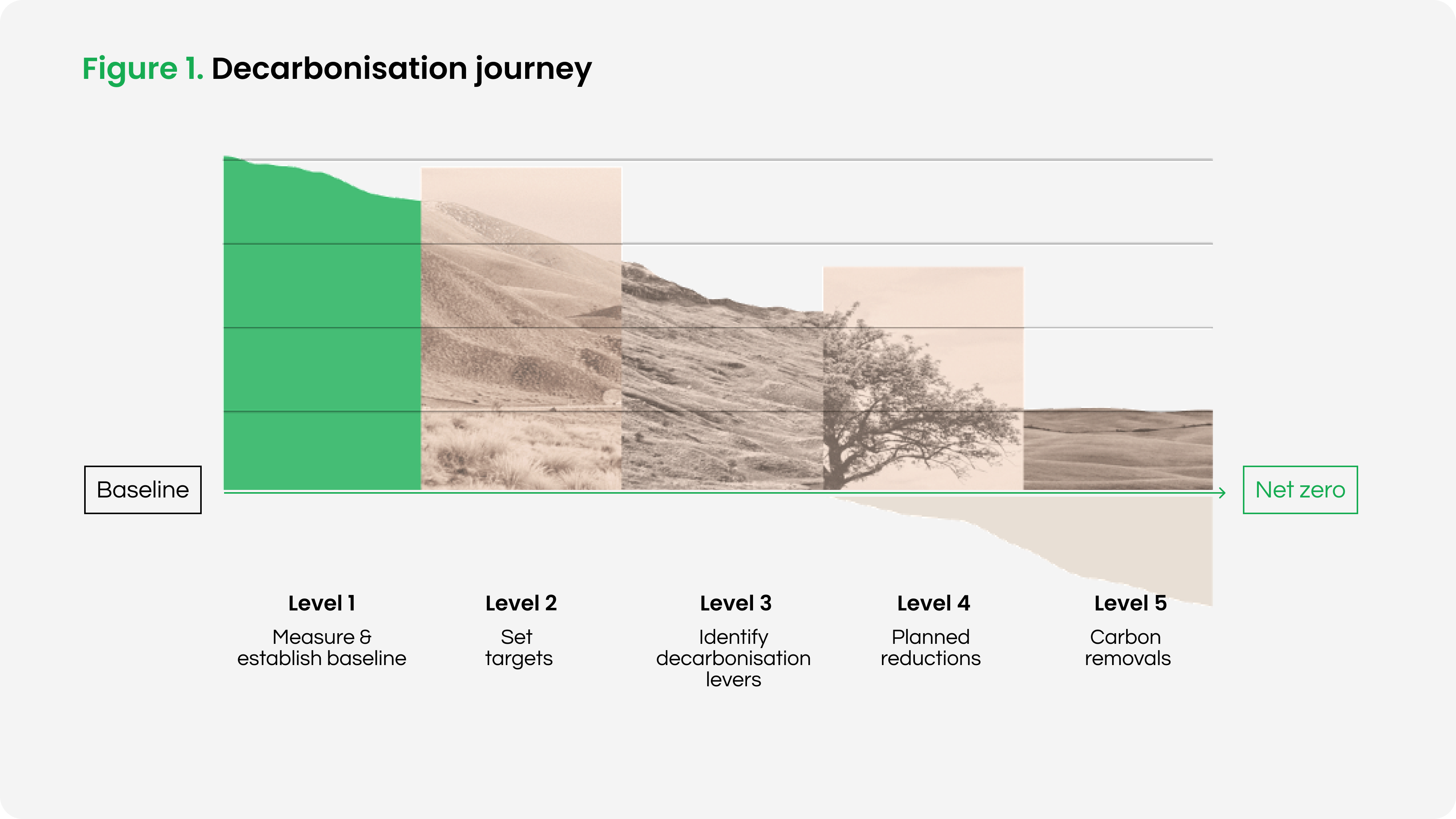How to Build An Effective Decarbonisation Strategy

How to Build An Effective Decarbonisation Strategy?
Achieving the goals set by The Paris Agreement is crucial for addressing the global climate crisis and ensuring a habitable planet for future generations. This necessitates a comprehensive and robust approach to decarbonising our economy.
Decarbonisation, at its core, involves the strategic reduction or complete elimination of carbon emissions. In the business realm, this process is particularly focused on mitigating the environmental impact associated with corporate operations and value chains.
Businesses aiming for decarbonisation typically engage in a series of initiatives aimed at minimising their carbon footprint. This may include adopting sustainable practices in energy consumption, transitioning to renewable energy sources, optimising production processes for efficiency, and implementing eco-friendly supply chain strategies. The overarching goal is to contribute significantly to the reduction of greenhouse gas emissions, ultimately aligning with global efforts to combat climate change.
Companies that proactively pursue decarbonisation not only contribute to environmental sustainability but also enhance their resilience in the face of changing market dynamics, regulatory landscapes, and consumer expectations. Moreover, such initiatives can lead to cost savings, improved brand reputation, and increased competitiveness in a world increasingly focused on sustainable practices. In essence, decarbonisation becomes a holistic strategy that not only benefits the planet but also fosters long-term business success.
The challenges and opportunities for decarbonisation may differ across organisations and sectors. However, the typical decarbonisation journey can be conceptualised as a 5-step process.
The diagram below shows the different steps on your journey to net zero.

The decarbonization process involves five steps. First, measure and understand your emissions through a Carbon Footprint Assessment. Second, set targets aligned with the 1.5°C pathway using the Science-based Targets Initiative. Third, identify specific tools to cut emissions based on your industry. Fourth, plan reduction measures through stakeholder engagement to ensure transparency and buy-in. Lastly, focus on carbon removals, neutralizing emissions through verified methods, prioritizing them after addressing emissions within your company's value chain.
To get more in-depth insights on the different levels of decarbonization journey, you can talk to our experts. For the purpose of this blog, we shall now focus on the key pillars of your decarbonization strategy.
The Six Key Pillars of Your Decarbonisation Strategy
Drawing from our experience with helping organizations build and implement their decarbonization strategy, here are a few tips to optimise your strategy and meet regulatory demands effectively:
Integrate with business strategy
Integrate climate considerations into business decisions early on. This ensures adaptability to changes in competition, technology, policy, and consumer preferences. Developing customised decarbonisation scenarios supports evidence-based decision-making in the dynamic business environment.
Engage stakeholders
Secure support from investors and staff to fast-track your journey to net zero emissions. Leaders should articulate the case for decarbonisation and take ownership of sustainability efforts.
Ensure regulatory agility
Identify data requirements, data owners (internal and external) and centralise the climate reporting system to manage diverse reporting requirements, especially for multinational operations.
Establish climate-focused partnerships
Collaborate with customers, suppliers, and industry peers to overcome sector-specific challenges efficiently, position your organisation as a leader, and amplify collective climate impact.
Track progress with data
Establish a reliable system for gathering and analysing data to build trust with stakeholders. This transparency is crucial for tracking progress against climate pledges and facilitating efficient reductions.
Build a dynamic strategy
The landscape of the low-carbon economy is evolving swiftly, with constant advancements in insights and technologies. By treating your decarbonisation plan as a dynamic strategy, regularly revisiting and updating it, you can stay agile, discard outdated tactics, and seize opportunities presented by breakthroughs.
The call for environmental preservation has become more urgent than ever, demanding a comprehensive reduction of carbon emissions across various sectors. Many businesses are stepping up by committing to net-zero goals, signalling a positive trend.
However, the transition from these commitments to tangible actions often encounters obstacles. Organisations must equip themselves with accurate data and personalised decarbonisation plans. With these tools, they can make informed and strategic decisions, ultimately playing a vital role in the global endeavour to secure the future of our planet.
More on decarbonisation in our on-demand webinar:

